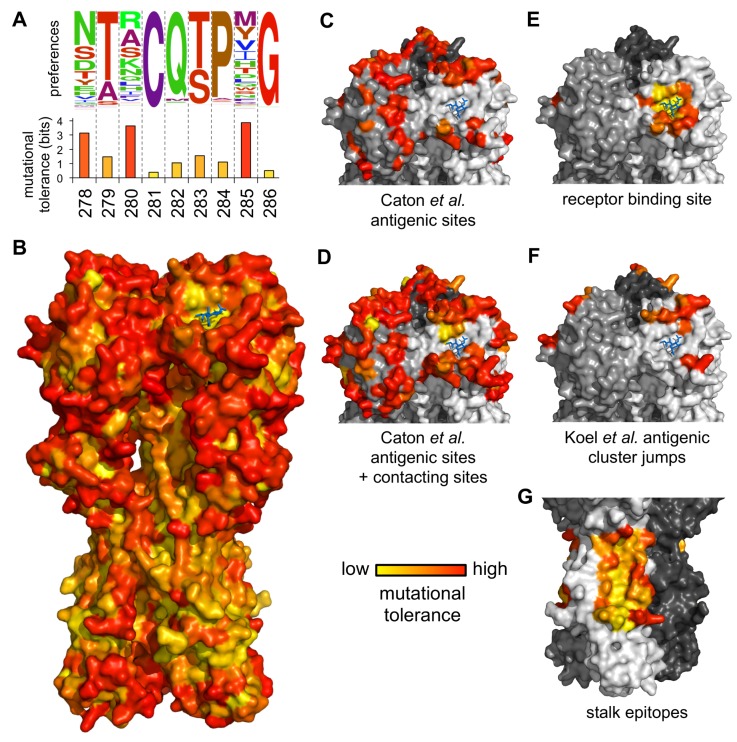Figure 5.
Antigenic sites in HA’s globular head have a high inherent tolerance for mutations, but HA’s stalk is relatively intolerant of mutations. (A) Mutational tolerance is calculated as the Shannon entropy of a site’s amino-acid preferences. (B) Mutational tolerance mapped onto the HA trimer (yellow indicates low tolerance, red indicates high tolerance, blue sticks show the sialic-acid receptor). (C,D) The antigenic sites defined by Caton et al. [33] have high mutational tolerance, as do the residues contacting these sites. (E) Conserved receptor-binding residues have low mutational tolerance. (F) Sites that contribute to antigenic cluster jumps [34]. (G) Sites in the footprints of four broadly neutralizing antibodies have low mutational tolerance. Shown are footprints of F10, CR6261, FI6v3, and CR9114 [35,36,37,38]. For panels B-G, tolerance is mapped onto PDB structure 1RVX [39]. For panels C-G, each monomer is shown in a different shade of gray. Figure S6 reports statistical analyses of whether subsets of sites have higher or lower tolerance than expected given their solvent accessibility. Figure S7 shows the tolerance of the different domains of HA.

